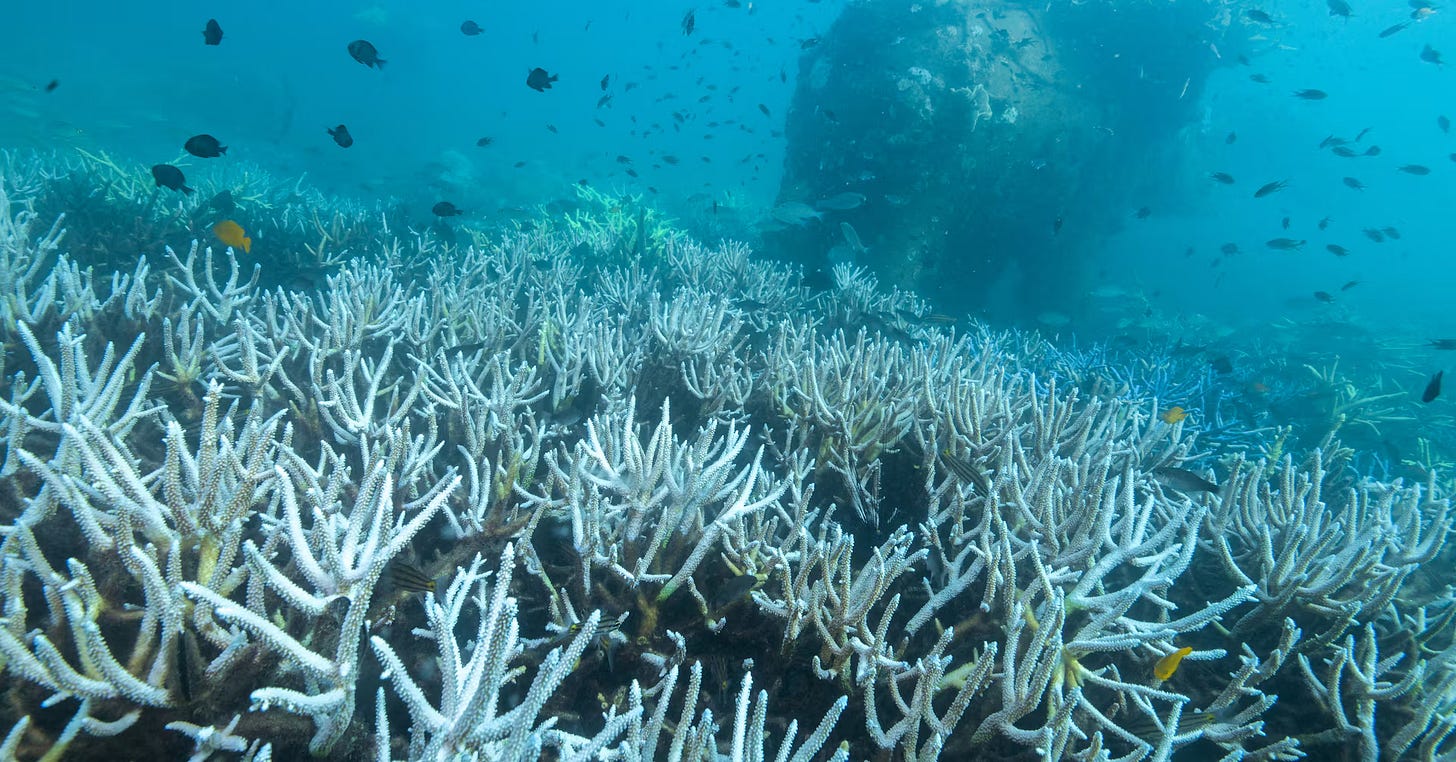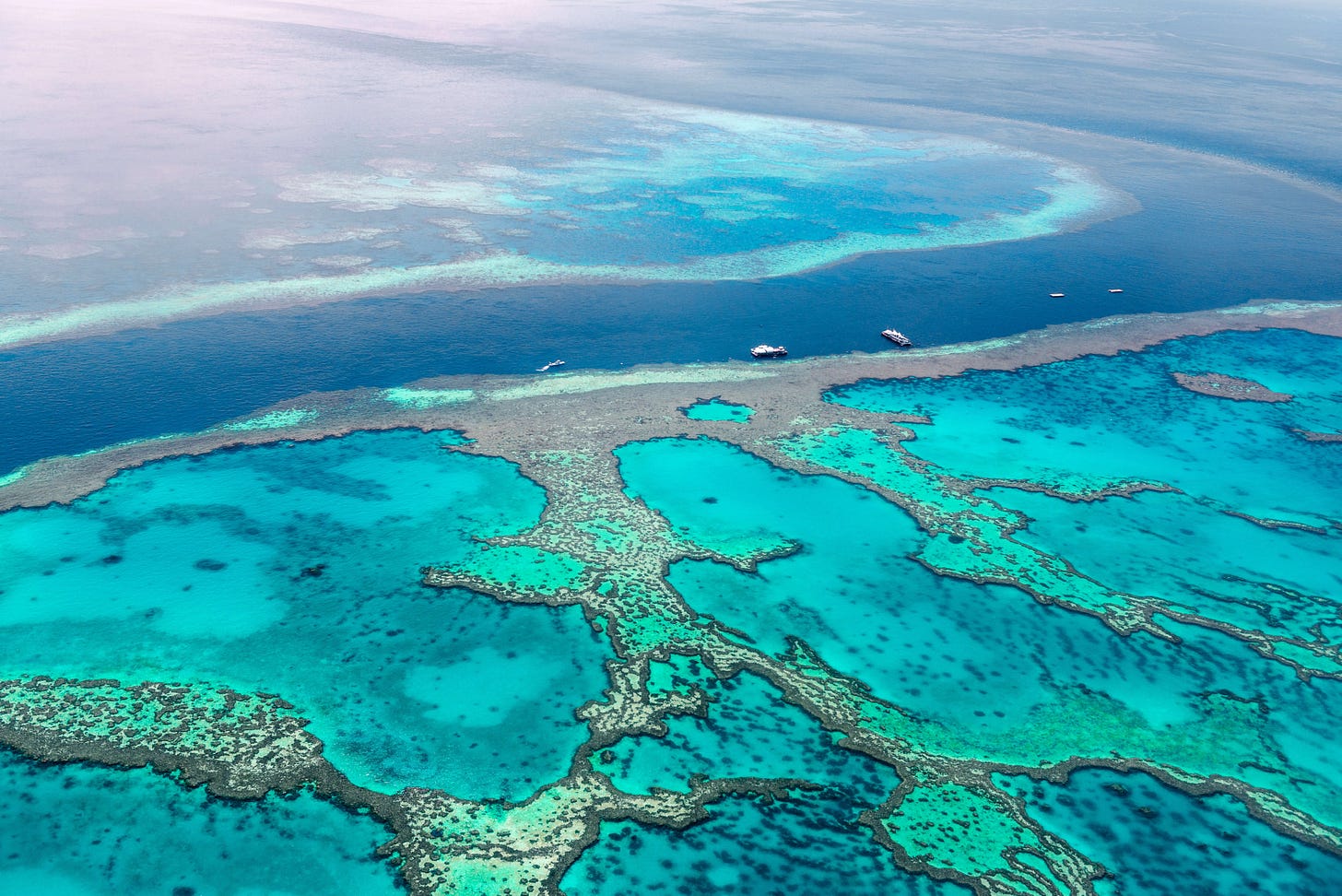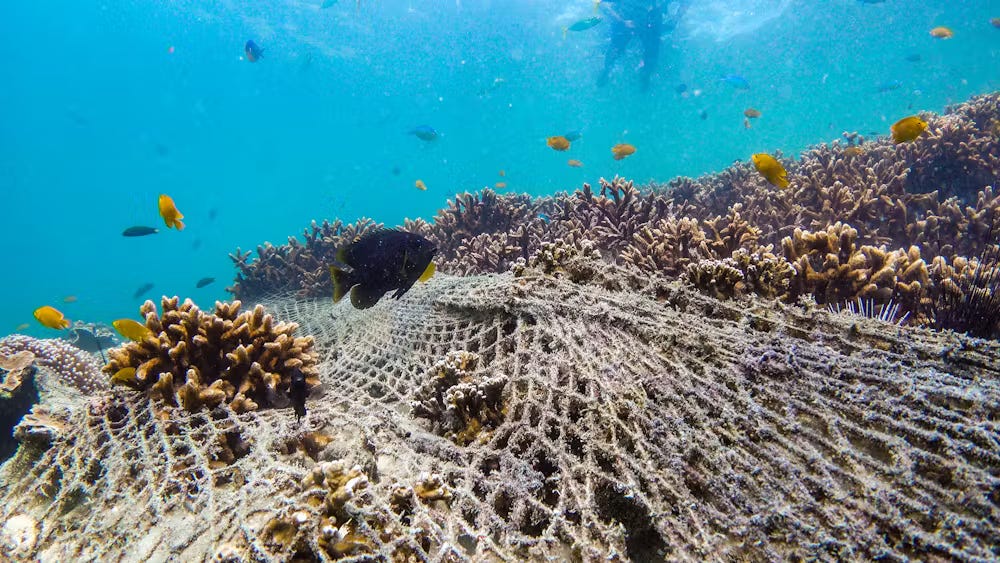A silent emergency is unfolding beneath the surface of the ocean. A new global assessment has revealed that 84% of coral reefs—the rainforests of the ocean—have been impacted by mass coral bleaching. This isn’t just an environmental tragedy. It’s a planetary alarm bell. And it’s ringing for us all.
From the Great Barrier Reef to the reefs of the Caribbean, no region has been spared. And the bleaching is being compounded by decades of neglect, overfishing, and industrial pollution.
Now, as our corals bleach white and die en masse, the very foundation of marine ecosystems hangs in the balance.
A global crisis with local consequences
Coral reefs cover less than 1% of the ocean floor but support more than 25% of all marine life. They are vital to global fish populations, coastal protection, and the cultures of island and coastal communities worldwide. Yet the 2023-2024 bleaching event is now the fourth global mass bleaching ever recorded, and the most widespread.
According to NOAA scientists, many reefs are experiencing “severe and prolonged heat stress,” with sea surface temperatures soaring up to 3°C above normal for weeks or months at a time. The stress causes corals to expel their symbiotic algae, the very organisms that give them color and nutrients, turning reefs into ghostly skeletons devoid of life.
And once a reef bleaches, it doesn't just recover. It can take decades to return, if it returns at all.
How warming waters are killing the reef
This isn’t a far-off problem. This is now. In the Maldives, dive operators report entire reef systems bleached overnight.
In Florida, emergency teams have tried “rescuing” corals by relocating them to cooler, deeper waters. All around the Pacific, reefs are becoming lifeless.
Coral reefs are also one of our most powerful natural climate defenses, acting as buffers against storms, erosion, and rising seas. Their collapse is not just a biodiversity loss, it’s a blow to the frontline protection of over 500 million people.
The double threat, yet both linked: The climate crisis and human exploitation
While the climate crisis acts as the accelerant, it is the relentless exploitation of marine ecosystems by human industry, particularly industrial fishing, that has long eroded the resilience of coral reefs, leaving them fatally vulnerable to warming waters. Coral bleaching is not just a story of temperature. It is a story of systemic neglect, regulatory failure, and the unchecked hunger of global fisheries.
For decades, large-scale industrial fishing fleets have scoured reef-adjacent waters, extracting biomass at unsustainable levels. What was once a balance of predator and prey—where coral reefs thrived in harmony with reef fish, grazers, and predators—is now a fractured food web.
In many places, the large fish are gone. The grazers—like parrotfish, which keep algae in check and help corals breathe—have been overfished to the brink. Without them, algae smothers the reefs, compounding the stress of rising sea temperatures and weakening recovery after bleaching events.
In short: the reefs are under siege from two sides. The climate crisis delivers the blow, but the fishing industry steals the reef’s ability to recover.
The fishing industry has transformed once-resilient coral ecosystems into biological deserts. Long-lining, dynamite fishing, cyanide fishing, and especially bottom trawling have wreaked havoc on coral systems globally.
Trawling doesn’t just catch fish—it rips apart reef structures, turning living habitat into rubble.
In Southeast Asia, home to the Coral Triangle—the most biodiverse marine region on Earth—reef fish stocks have declined by 80% in the last 40 years. In the Caribbean, overfishing of herbivores like surgeonfish and parrotfish has resulted in coral cover dropping from 50% in the 1970s to less than 10% in many regions today. When overfished reefs bleach, they rarely recover.
Global seafood demand drives this crisis. Powerful fleets, often subsidized by wealthy nations, extract fish from tropical, often poorly regulated, regions. This neocolonial pattern of resource extraction leaves ecosystems in collapse, and reefs bleeding biodiversity.
MPAs in name only: The illusion of protection
Marine Protected Areas (MPAs) were intended to be a shield against industrial harm. But too many MPAs exist only on paper. In 2023, satellite tracking data revealed that illegal or unregulated industrial fishing continues in over 70% of so-called “protected” reef zones. Supertrawlers, some the size of football fields, can log tens of thousands of hours of fishing time in these areas with little enforcement or consequence.
These incursions are not isolated events, they are part of a larger pattern of impunity. In nations struggling with enforcement capacity, bribery, political interference, and underfunded maritime agencies often allow foreign fleets to operate unchecked. And the reefs pay the price.
The path forward: Protection, not profit
We need urgent, coordinated global action, not empty pledges. The preservation of coral reefs must be at the center of climate adaptation strategies, not treated as a side effect of energy policy.
Here’s what must happen now:
Massive reductions in global greenhouse gas emissions.
Global reef restoration funding to support community-led conservation and scientific intervention.
A moratorium on destructive practices like bottom trawling and coastal dredging near reef systems.
Enforcement of No-take marine protected areas (MPAs) to give reefs a fighting chance.
What you can do
Shift toward a plant-based diet
Choosing plant-based foods—especially in place of seafood—reduces the demand that drives overfishing, bycatch, and seabed destruction. Even a few seafood-free days a week makes a difference.
Industrial fishing burns more fossil fuels per calorie than almost any form of agriculture.
Bycatch kills millions of non-target species annually, including reef fish.
Plant-based diets help reduce your carbon footprint and your impact on marine biodiversity.
You don’t have to go fully vegan overnight, but eating lower on the food chain is one of the most powerful ocean-positive decisions you can make.
Support organizations who are fighting to restore and protect reefs.
Use coral-safe sunscreen (not just “Reef Friendly”)
Many sunscreens contain chemicals like oxybenzone, octinoxate, and octocrylene, which are toxic to corals even in trace amounts. These substances disrupt coral reproduction, cause bleaching, and deform coral larvae, accelerating reef decline.
But beware: "reef friendly" is not a regulated term. Greenwashing is rampant. Here’s how to find truly coral-safe sunscreen:
✅ Look for mineral-based (physical) sunscreens that use non-nano zinc oxide or non-nano titanium dioxide as active ingredients.
❌ Avoid sunscreens with:
Oxybenzone (benzophenone-3)
Octinoxate (ethylhexyl methoxycinnamate)
Octocrylene
Homosalate
Avobenzone
Parabens and synthetic fragrances
Every time you swim, surf, or snorkel, you’re bringing your sunscreen into the sea. Make sure it’s not killing the reef you came to admire.
Share this knowledge. Post, talk, write. Reframe the narrative around seafood and reef health.










